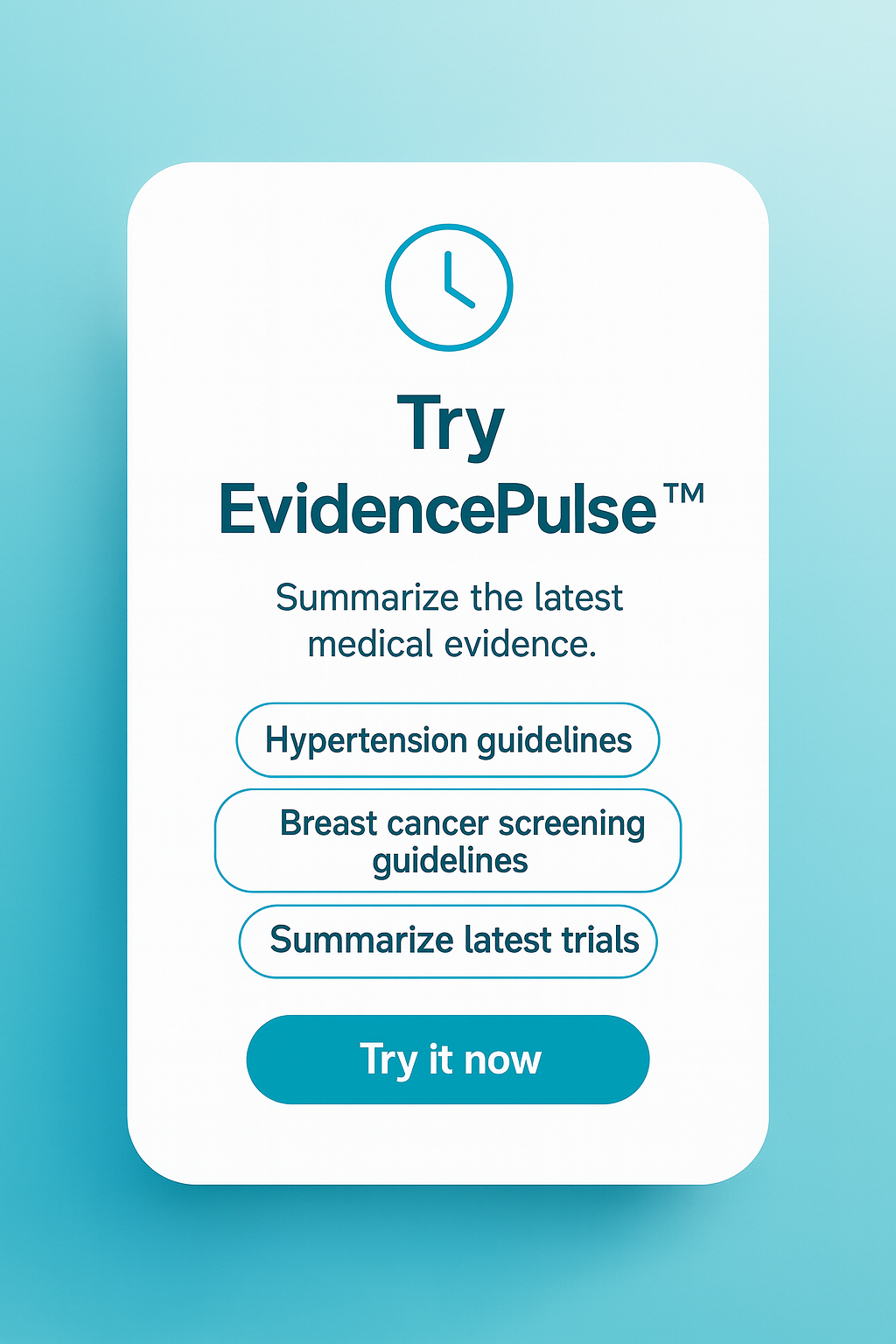2 Minute Medicine Rewind March 29, 2021
P2Y12 inhibitor monotherapy after coronary stenting according to type of P2Y12 inhibitor
1. In patients undergoing percutaneous coronary intervention, 3-month dual antiplatelet therapy (DAPT) followed by P2Y12 inhibitor monotherapy showed comparable cardiovascular outcomes to 12-month DAPT.
Evidence Rating Level: 2 (Good)
Several randomized trials have showed that after percutaneous coronary intervention (PCI), short-duration DAPT (dual antiplatelet therapy) followed by P2Y12 inhibitor monotherapy reduced bleed risk while providing comparable protection against recurrent ischemic events compared to 12-month DAPT. In STOPDAPT 2, 1-month DAPT followed by clopidogrel monotherapy showed a reduction in a composite endpoint of cardiovascular and bleeding events. More potent P2Y12 inhibitors, such as ticagrelor and prasugrel, may provide more consistent inhibition against platelet aggregation, but have only been indicated for patients with acute coronary syndrome. While clopidogrel is by far the most frequently prescribed P2Y12 inhibitor, data with clopidogrel monotherapy remains limited due to interpatient variability in response. This pre-specified analysis of an open-label, non-inferiority, randomized trial, The Smart Angioplasty Research Team: Comparison Between P2Y12 Antagonist Undergoing Implantation of Coronary Drug-Eluting Stents (SMART-CHOICE), included 2 993 patients (58.2% presenting with ACS) who had undergone PCI with drug eluting stent (DES). Patients received either P2Y12 inhibitor monotherapy after 3-month DAPT or 12-month DAPT. Clopidogrel was the main P2Y12 inhibitor used, received by 77.2% of the study population, with the remaining 22.8% using potent P2Y12 inhibitors (18.4% with ticagrelor, 4.3% with prasugrel). Regardless of P2Y12 inhibitor used, no significant differences were found between the groups with P2Y12 monotherapy and 12-month DAPT in the composite primary endpoint of all-cause death, myocardial infarction or stroke (MACCE) at 12 months after the index procedure. Among patients receiving clopidogrel, consistent treatment effects were shown across various subgroups, such as ACS, diabetes, and multivessel intervention. Among patients receiving potent P2Y12 inhibitors, there was a significantly lower risk of bleeding in the group who received P2Y12 inhibitor monotherapy compared to the DAPT group (HR 0.33, p=0.03). Of note, patient adherence to antiplatelet treatment was lower in the P2Y12 inhibitor monotherapy group compared to the DAPT group; nonetheless, both the per-protocol analysis and the intention-to-treat analysis showed similar results. As well, this study was conducted in a Korean population. Given a higher prevalence of CYP2C19 loss-of-function genotype, resulting in poorer metabolization of clopidogrel, among East Asians, these study results will need to be applied carefully to other groups. While this study demonstrated comparable cardiovascular outcomes between the use of 3-month DAPT followed by clopidogrel monotherapy and 12-month DAPT, further studies powered to compare different arms between P2Y12 inhibitors would be necessary.
1. In both obese and non-obese patients, NT-proBNP level <1000pg/mL during treatment showed favourable prognostic implications in heart failure with reduced ejection fraction.
Evidence Rating Level: 2 (Good)
While obesity itself is a major risk factor for developing heart failure, overweight and obese patients have been reported to have paradoxically better prognoses in heart failure compared to normal and underweight patients. N-terminal pro-B-type NP (NT-proBNP), one of the gold standard biomarkers for risk stratification, diagnosis, and prognostication in heart failure, is also lower in obese individuals. This post-hoc analysis examined patients with heart failure with reduced ejection fraction (HFrEF) from the GUIDE-IT trial (Guiding Evidence-Based Therapy Using Biomarker-Intensified Treatment in HF). Multi-variable adjusted Cox proportional hazard models were used to compare the risks for adverse cardiovascular events between obese aad nonobese patients and a likelihood ratio test was used to evaluate whether this risk could be predicted by NT-proBNP levels or improved by lowering NT-proBNP. 873 participants with HFrEF were stratified by baseline BMI into obese (BMI >30 kg/m2) and nonobese (BMI <30 kg/m2) groups. In GUIDE-IT, patients in the treatment arm had their medical therapy titrated to reach an NT-proBNP target of <1000 pg/mL. Medical therapy, computed as a GDMT (guideline-directed medical therapy) score, having NT-proBNP levels <1000 pg/mL, and change in NYHA class from baseline were treated as time-varying covariates, calculated per visit. In patients with HF who had NT-proBNP levels <1000 pg/mL, both obese and non-obese patients had lower risks for the primary outcome, a composite of HF hospitalization and cardiovascular-associated mortality (HR 0.48, 95% CI 0.29-0.59 and HR 0.32, 95% CI 0.19-0.57 respectively). While NT-proBNP levels were 59% lower in obese patients, obesity and having NT-proBNP <1000pg/mL were not associated with adverse cardiovascular event risk. Nonetheless, obese patients were at a greater risk of experiencing adverse cardiovascular events compared to non-obese patients (HR 1.39, 95% CI 1.01-1.90). Although this study was underpowered to detect a significant interaction between obesity and NT-proBNP <1000pg/mL with the primary outcome, this analysis highlighted NT-proBNP as the strongest predictor examined of adverse cardiovascular event risk, irrespective of obesity status.
1. Direct oral anticoagulants may have a superior risk-benefit profile compared to vitamin K antagonists in atrial fibrillation for patients with hemodialysis.
Evidence Rating Level: 2 (Good)
While direct oral anticoagulants (DOACs) have been shown to have superior risk-benefit profiles over vitamin K antagonists (VKAs) in patients with atrial fibrillation and normal renal function or early stage chronic kidney disease (CKD). This observational follow-up study of the randomized controlled trial, Valkyrie, investigates the comparative efficacy and safety of DOACs versus VKAs for atrial fibrillation in the hemodialysis population. In Valkyrie, 132 patients on chronic hemodialysis were randomized in a 1:1 ratio to receive a VKA with a target INR of 2-3, rivaroxaban 10 mg daily, or rivaroxaban 10mg and vitamin K2 2000 ug thrice weekly post-dialysis for 18 months. Rivaroxaban 10 mg was chosen based on the results of a pharmacokinetic and pharmacodynamic analysis, which showed that this dose provided patients on hemodialysis a similar exposure to a dose of rivaroxaban 20 mg in healthy individuals. In this open-label, prospective trial, follow-up was extended for at least 18 additional months for patients continuing their originally assigned treatment, to a median follow-up of 1.88 years.For the composite primary endpoint, fewer fatal and nonfatal cardiovascular events occurred in either rivaroxaban arm compared to the VKA arm (rivaroxaban vs VKA: HR 0.41, p=0.0006, rivaroxaban and K2 vs VKA: HR 0.34, p=0.0003). While death from any cause, cardiac death, and stroke risk were not significantly different between treatment arms, symptomatic limb ischemia occurred significantly more frequently in the VKA arm than either of the rivaroxaban arms (VKA 20 patients, rivaroxaban 10 patients, rivaroxaban and K2 9 patients, p=0.02). As well, life-threatening and major bleeding was not significantly different between the VKA and rivaroxaban arms individually, but was significantly less in the pooled rivaroxaban groups compared to the VKA group (HR 0.44, p=0.02). Of note, while patients on hemodialysis typically experience high rates of premature, permanent discontinuation of oral anticoagulation, this study showed a withdrawal rate of only 25%. Considering more than two thirds of patients were already stable on oral anticoagulation at randomization, a lower withdrawal rate may have resulted from selecting patients with higher tolerability of anticoagulation. Nonetheless, these findings support that compared with VKA, rivaroxaban, at a reduced dose, significantly decreased the incidence of fatal and nonfatal cardiovascular events as well as major bleeding events in patients on hemodialysis with atrial fibrillation.
1. Patients who had schizophrenia, bipolar disorder or major depression had worse short-term mortality outcomes at 30 days and 1 year and were less likely to receive coronary revascularization.
Evidence Rating Level: 2 (Good)
For patients with severe mental illness (SMI, includes schizophrenia (SCZ), bipolar disorder (BPD) and major depression (MD)), cardiovascular disease (CVD) is a major cause of premature mortality and extensive research has been done on CVD occurrence in this population. There is less data available, however, for CVD outcomes in SMI patients, especially in patients with bipolar disorder and major depression. In this retrospective cohort study, 235 310 adult patients with first myocardial infarction (MI) between 1994-2014 were evaluated for SMI prevalence and CVD outcomes for a median follow-up of 5.3 years. A multivariate analysis was done which included adjusting for age at MI and year of MI (previously unaccounted for in such studies), sex, history of alcohol use disorder, deprivation, urbanciity and health board. Patients with SMI showed worse primary outcomes: 30-day mortality (OR for patients with SCZ 1.95, BPD 1.53, MD 1.37), 1-year mortality (OR for patients with SCZ 2.22, BPD 1.90, MD 1.53), and revascularization within 30 days (HR for patients with SCZ 0.57, BPD 0.69, MD 0.78). Secondary outcomes were also worse for patients with SMI which included 5-year mortality, mortality over the entire follow-up period, time to further vascular event, and time to further MI. Additional analysis showed that these disparities in primary outcomes existed for the duration of study period and highest absolute disparity highest for MIs occurring in participants around 70 years of age. Further studies to be conducted should focus on characterizing this risk, whether it be due to lifestyle factors or related to medications for treatment of SMI.
Age dependent associations of risk factors with heart failure: pooled population based cohort study
1. Risk factors, such as hypertension, diabetes, smoking and history of myocardial infarction, were associated with a higher risk of developing heart failure in younger populations compared to older populations.
2. Population-attributable risk of heart failure was better explained by traditional risk factors in younger than in elderly patients.
Evidence Rating Level: 2 (Good)
Heart failure, which can affect up to 1 in 5 adults, is usually found in patients 65 years old and above but not exclusively. Reports have noted that younger adults who develop heart failure are usually, non-white, obese, and diabetic. This study tried to characterize whether age has an effect on traditional risk factors on development of heart failure. This cohort study amalgamated data from three observational, prospective, community based cohorts with heart failure outcomes (Framingham Heart Study, Prevention of Renal and Vascular Endstage Disease, Multi-Ethnic Study of Atherosclerosis). A total of 24 675 participants without heart failure, with a median follow-up of 12.7 years, were analyzed. The incidence of developing heart failure in this study was 1% in patents <55 years of age, 5% in 55-64 years of age, 10% in 65-74 years of age, and 18% in >74 years of age. Risk factors typically associated with heart failure had more of an impact on younger patients such as hypertension (HR 3.02 in <55 years old vs HR 1.40 in >74 years old, p<0.05), diabetes (HR 3.86 in <55 years old vs HR 1.66 in >74 years old, p<0.05), smoking (HR 2.58 in <55 years old vs HR 1.21 in >74 years old, p<0.05) and previous myocardial infarction (HR 3.30 in <55 years old vs HR 1.35 in >74 years old, p<0.05). Further, in patients <55, risk of developing heart failure was better explained by traditional risk factors compared to those >74 years age (75% vs. 53%). Limitations of this study include that confounding factors, such as whether hypertension was treated, were not all captured, and that there was a lower event rate in younger populations leading to unpowered calculations for secondary outcomes. Future research looking at additional risk factors such as exercise and use of cardiovascular drugs (lipid-lowering therapy, antihypertensive therapy) can provide additional information on the effect of these
Image: PD
©2020 2 Minute Medicine, Inc. All rights reserved. No works may be reproduced without expressed written consent from 2 Minute Medicine, Inc. Inquire about licensing here. No article should be construed as medical advice and is not intended as such by the authors or by 2 Minute Medicine, Inc.









